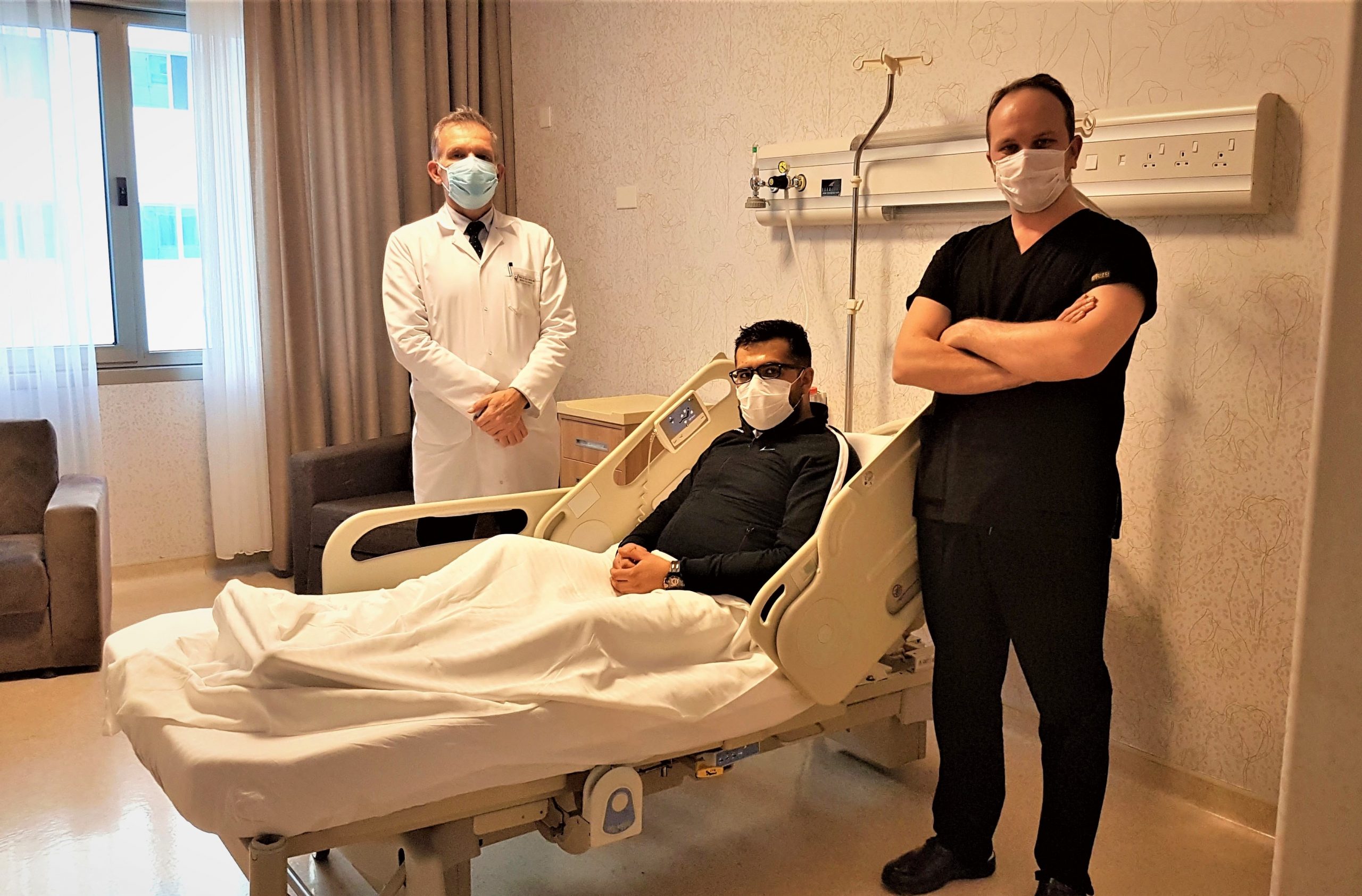
Synovial Joint Patients Abroad Find the Remedy at Near East University Hospital!
Patients with rare joint diseases such as "Synovial chondromatosis" and "Pigmented Nodular Synovitis" are coming to our country from Turkey to get treatment. The treatment of the patients is carried out by the Nuclear Medicine, Orthopedics and Traumatology and Physical Medicine and Rehabilitation Departments at the Near East University Hospital with a multidisciplinary approach.
Although it is more common in the knees, the treatment methods of these diseases that can affect all joints in the body include medication, surgery and steroid injection. However, traditional methods can sometimes be insufficient in treatment. In such cases, "radionuclide synovectomy" treatment, which is also conducted at the Near East University Hospital, has become a hope for patients. Finally, the patients who come for treatment from Turkey to the TRNC and were both surgically treated before, 27-year-old H. A. diagnosed with synovial conomatosis and 26-year-old M.G.K., diagnosed with Pigmented Nodular Synovitis, were put under radionuclide therapy with a successful application at the Near East University Hospital.
Positive result in 15 days
The success rate of radiosynovectomy treatment, whose positive effects are seen after 15 days, varies between 60 and 80 percent. The treatment, which can be performed without the need for anesthesia, can also be applied to joints in different parts of the body such as knees, hips and fingers. With the beginning of the application of radionuclide therapy at the East University Hospital, synovial conomatosis patients started coming to the TRNC for treatment, especially from Turkey and many other foreign countries.
Commenting on the procedures applied to patients coming to our country from abroad, Near East University Hospital Nuclear Medicine Department Head Prof. Dr. Nuri Arslan, said that they successfully treated and discharged patients whose treatments failed previously and came to our country and received radionuclides treatment.
Prof. Dr. Nuri Arslan: "Radionuclide treatment method has a high success rate reaching 80 percent."
Stating that although there is a certain limitation of movement caused by pain and swelling caused by Synovial Chondromatosis and Pigmented Nodular Synovitis, which is a very distressing joint disease rarely seen, Prof. Dr. Nuri Arslan pointed out that radionuclide therapy creates a ray of hope for patients who cannot be successful with surgery or who have a high probability of recurrence.
In the first stage of the treatment, the fluid accumulated in the joint is drained. In the second step, the radioactive drug is given to the joint together with steroid and saline by injection method, and the radioactive drug is distributed evenly within the joint. The chance of success of the treatment can reach up to 80 percent, depending on the chronicity of the disease, the thickness of the synovial membrane and the success of the previous surgical intervention. Patients' pain and joint swelling are expected to begin to decrease in 2 to 3 weeks after treatment. In case of not getting satisfactory results from the first treatment, the procedure can be repeated after 6 month. Response to treatment is determined by clinical examination and MRI control after 1 month.